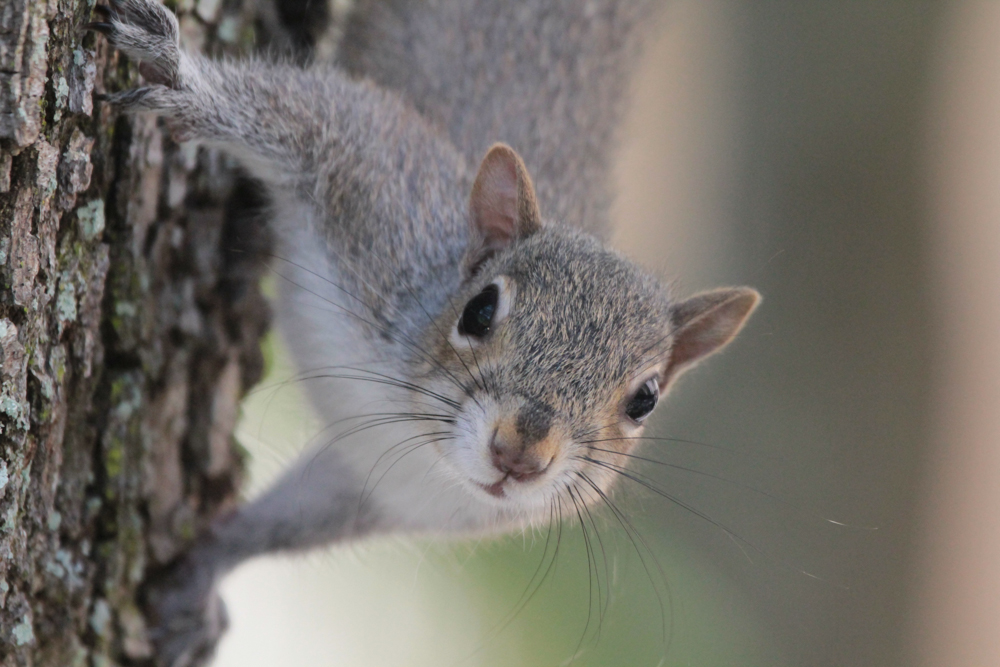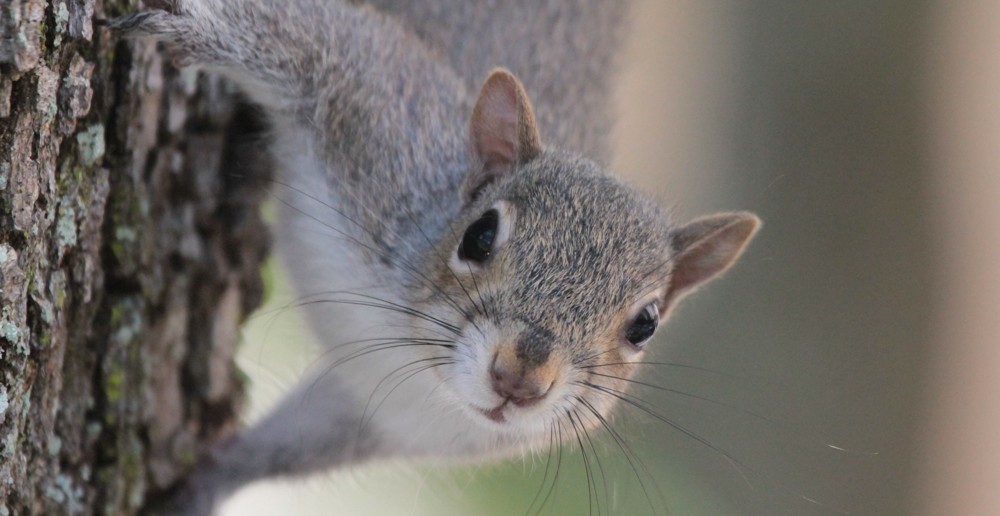

Biology professor Thaddeus McRae has made a career out of chasing squirrels.
For his research, he uses kick balls, model airplanes and remote control cats to create “threats” to gray squirrels, and then records how the animals respond.
McRae’s research addresses animal communication – specifically why most animal species use more than one type of signal to communicate.
His work focuses on gray squirrel alarm calling, which involves vocalized calls as well as tail movements. Using two types of signals adds complexity to animal communication, but the reason for this added complexity – if there is one – is unknown.
Focusing his studies on three different sounds used by squirrels, as well as small and large tail movements, McRae hopes to shed some light on animal communication. He notes that “communication” is a misnomer; it’s unclear if the signals used by squirrels and other animals have specific meaning (e.g. “there’s a hawk!”) or are simply used to warn other animals of a threat (e.g. “look out!”).
To help reveal the purpose behind different signals, McRae records squirrel responses to his “threatening” tools with audio and video devices, and then searches the data for patterns. Understanding which signals are used together, and if some signals correlate to a specific threat, could provide new insight into how animals communicate.

McRae’s original research interest was on the social interaction of African Elephants. However, after spending some time observing the elephants, he quickly realized that such a project would take more time than he could afford.
“Ph.D. programs are not typically 30-year endeavors,” he said. “So I had to rethink my plan.”
With the desire to stay in Africa, McRae shifted his focus to a species of small mammals called hyraxes. These mammals, which McRae compares to rabbit-woodchuck hybrids with small tusks, are closely related to elephants. The new project seemed promising until political violence erupted in Kenya, forcing him to return to UM and start from scratch.
With no time to waste, McRae had to think of a new study subject that was easily accessible. Continuing with the theme of mammal communication, he realized that studying squirrels would allow him to collect lots of data in a relatively short time span, and he wouldn’t have to travel far to find them since squirrels are abundant on the UM campus.
Using his research for his doctoral dissertation, McRae successfully earned his doctoral degree at UM in 2012. He’s still researching gray squirrels on campus, but is also shifting focus to gray wall jumpers, a species of tropical jumping spider. Gray wall spiders, like gray squirrels, use two modes of communication. The males sing and dance to female spiders during courtship.
Researching courtship behaviors instead of alarm calling opens up a new range of questions for McRae, including what patterns of song and dance are used by the spiders, how the females respond, and what information is conveyed about the male through such signaling.
McRae permits some undergraduate students to help him manage data collection and analysis. Students who are interested in assisting with his research can contact him directly through his website at thaddeusmcrae.com.






